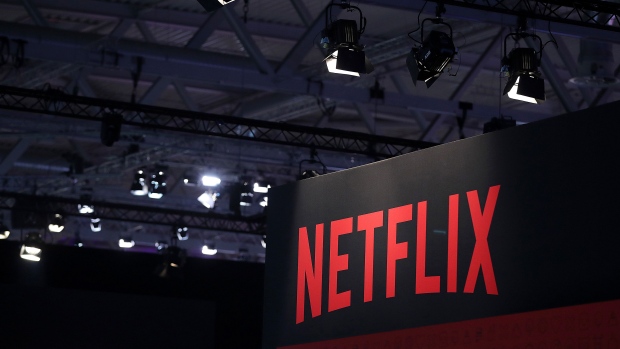Mar 30, 2023
Netflix Restructures Film Group as It Scales Back Movie Output
, Bloomberg News

(Bloomberg) -- Netflix Inc. is restructuring its film group to make fewer movies each year and centralize decision-making, the company said Thursday.
Netflix will combine units that produce small and midsize pictures, a change that will result in a handful of layoffs and the departure of two of its most experienced executives. Lisa Nishimura, who led Netflix into standup comedy and original documentaries, will depart after more than 15 years at the company. She is presently responsible for documentaries and smaller-budget films.
Ian Bricke, a vice president in the film group, is also leaving after more than a decade. Bricke helped make The Kissing Booth movie franchise and worked with filmmakers such as Nicole Holofcener and the Duplass brothers.
Film chief Scott Stuber is attempting to scale back the company’s output so that he can ensure more of the titles are of high quality. The streaming service has released more original movies than any other company in Hollywood recently, producing upwards of 50 projects a year.
A handful of those earn Oscars, like All Quiet on the Western Front, which won best international film this year, or are viewed by tens of millions of people, like Glass Onion: A Knives Out Mystery. But many of them come and go with little fanfare.
Read more: Netflix’s film chief on the future of movies, and Glass Onion
Netflix increased its output in part because it knew other studios would stop licensing it as many titles as they focused on their own streaming services. The company added staff to boost production, creating multiple divisions responsible for movies at different price points. The independent film group makes movies with a smaller budget (typically $30 million or less), while another group makes ones in the mid-buget range (between around $30 million to $80 million). Yet another unit makes bigger-budget films.
Those different divisions operated with relative autonomy, in keeping with Netflix’s culture of decentralized decision making. Executives often had the power to agree to make a movie without checking with their superiors. Stuber is now centralizing more of the decisions and trying to get more of his executives to collaborate.
“We thank them both for their contributions to making us a world-class film studio and wish them the best for the future,” Stuber said of the two executives leaving. He praised Nishimura “as a champion for inclusion on and off screen,” noting that she joined Netflix when it was still primarily a DVD-by-mail service. He thanked Bricke for his work on an emerging filmmaker initiative.
The job cuts are much smaller in scale than the ones Netflix instituted a year ago. The company, which closed 2022 with about 12,800 employees, eliminated hundreds of positions last year in an effort to reduce costs after its subscriber growth slowed.
Netflix’s cuts presaged a year of job reductions at many of its peers in film and TV, which have been cutting costs in response to the loss of traditional TV viewers and pressure from investors to improve the profitability of streaming. Walt Disney Co. began the process of eliminating 7,000 job this week.
As finding new customers has become more challenging, Netflix has introduced a lower-priced streaming plan with advertising to boost revenue and attract budget-conscious viewers. It closed 2022 with almost 231 million paying customers. It’s also rolling out a program to force people who use someone else’s Netflix account to pay for the service.
The company is scheduled to report first-quarter results on April 18.
©2023 Bloomberg L.P.

